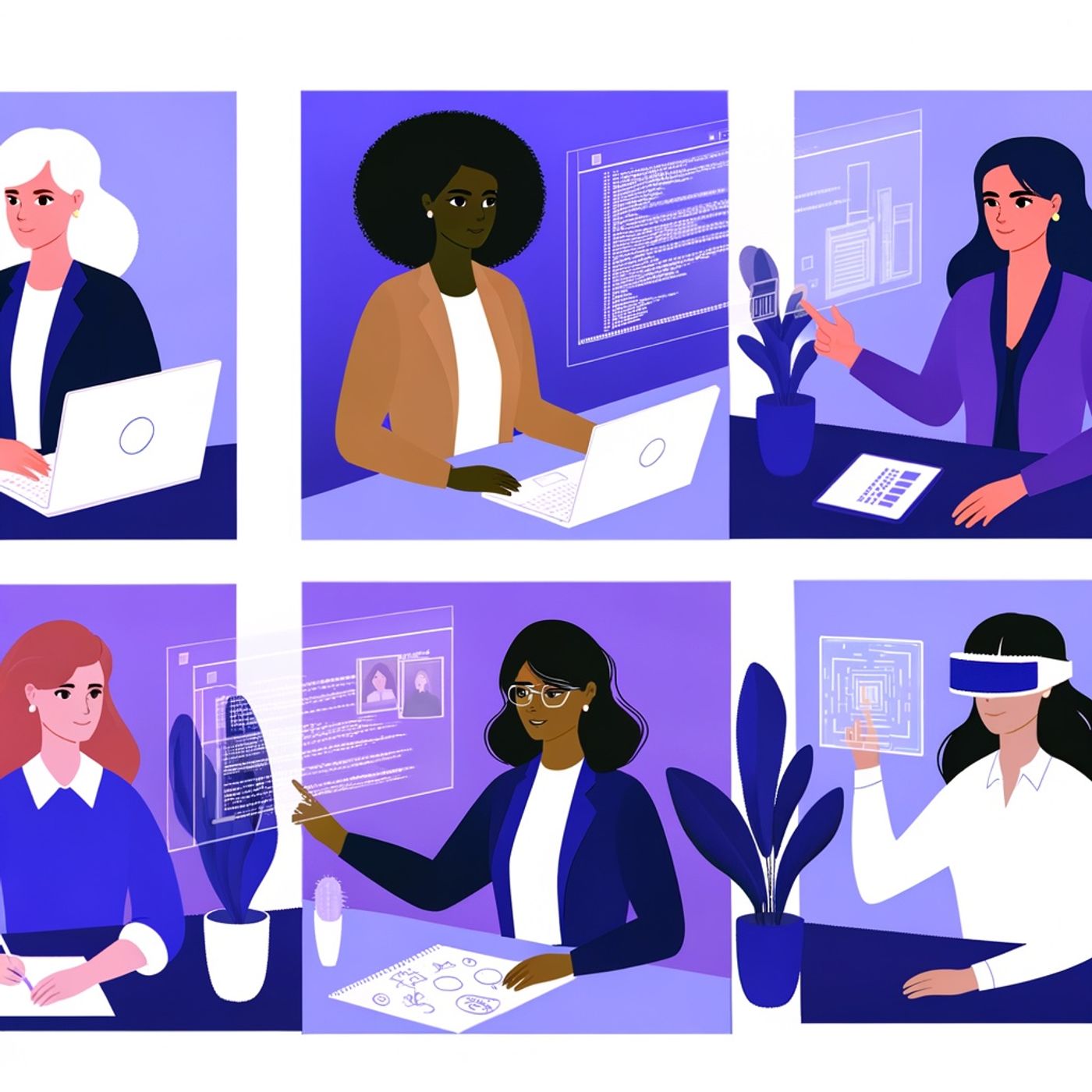Podcast Episode Details
Back to Podcast Episodes
Decoding the Tech Gender Gap: Powering Progress, One Woman at a Time
This is your Women in Business podcast.
Welcome back, listeners, to Women in Business. Today, we’re diving straight into the reality and future of women navigating the economic landscape within the tech industry. Everyone talks about disruption, AI, and innovation, but too often, the voices and experiences of women remain underrepresented—despite playing vital roles across this sector.
First, let’s look at where things stand. According to the Nash Squared Digital Leadership Report, only about 14% of global tech leaders in 2023 were women, the same as the previous year. Even in the United States, a country that leads tech innovation worldwide, the average tech team is just over a quarter women. Companies like Amazon, Facebook, Apple, Google, and Microsoft—those mega-forces shaping our digital reality—still report workforces that are overwhelmingly male, with female representation hovering between 33 and 45 percent. And when it comes to roles like software development or network administration, the numbers are even lower, with women holding roughly 21% and 21% of those jobs, respectively.
Against this backdrop, the gender pay gap is still a challenge. Women in the US tech industry earn on average less than men in comparable roles, despite the sector being one of the most lucrative in the nation. But here’s the promising bit—McKinsey estimates that closing this gender gap could add as much as $12 trillion to global GDP by 2025. That’s proof that investing in gender equity isn’t just about fairness, it’s an economic imperative.
Mentorship and sponsorship are trending topics for a reason: Skillsoft’s Women in Tech Report highlights that mentorship doubles the progression into leadership positions for women. Mentors build skills and confidence, while sponsors open doors and advocate in rooms that may not otherwise be accessible. This is especially relevant given that only about 17% of technology companies in the US have female CEOs, and just 8% of chief technology officers are women.
Tech’s rapid adoption of AI brings a new layer of opportunity—and risk. Three-quarters of companies plan to expand AI use by 2028, but as Skillsoft found, women are less likely to be using AI at work. The risk is clear: if women are left behind in the AI transition, the gender gap could actually widen. On the positive side, companies leading the way in digital entertainment and e-commerce are setting the pace for broader gender diversity, showing as much as 46% female representation in some fields.
Retention and work-life integration is another ongoing issue. Many women in tech report that their career momentum stalls mid-career, often not from lack of ambition, but because rigid workplace structures fail to support the realities of caregiving or the need for genuine flexibility. This ‘Missing Middle’ has received attention in Australia’s Women in Digital Report, but it’s relevant globally—highlighting that it’s not just about bringing women in, it’s ensuring they stay and thrive.
Finally, the pipeline problem remains front and center. While STEM education and diversity policies are putting more women on the tech path, global parity is still decades away unless the industry commits to deep cultural and systemic change. Role models, collaborative data projects, and hands-on policy interventions can accelerate progress—but only if every stakeholder is on board and accountable.
Thanks for tuning in to Women in Business. If you found this episode enlightening, please subscribe so you never miss an empowering conversation. This has been a quiet please production, for more check out quiet please dot ai.
For more http://www.quietplease.ai
Get the best deals https://amzn.to/3ODvOta
This content was created in partnership and with
Published on 2 months, 2 weeks ago